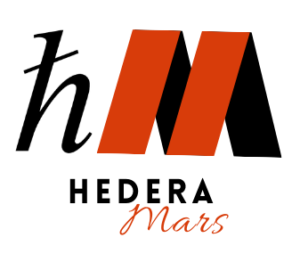HBAR Faces a Tumultuous 2025 But Remains Resilient
HBAR, the native cryptocurrency of the Hedera Hashgraph network, has experienced a tumultuous 2025 characterized by significant price fluctuations, pressure from institutional sell-offs, and challenging macroeconomic conditions. Despite these short-term challenges, HBAR’s underlying strengths, driven by robust enterprise-grade fundamentals and strategic alliances, present a promising narrative for long-term investors. This article explores the relationship between HBAR’s current difficulties and its foundational advantages, providing insights for those looking to navigate its investment potential.
Price Fluctuations and Institutional Selling Trends
In early August 2025, HBAR’s price exhibited a notable 6% daily fluctuation, ranging from $0.259 to $0.244. A crucial support level around $0.248–$0.249 remained intact, despite a minor 1% decline. Although indicators such as the Relative Strength Index (RSI) and Moving Average Convergence Divergence (MACD) suggested positive momentum, the mixed signals from the Ultimate Oscillator and high trading volumes during recovery phases indicated profit-taking activity. A significant drop below $0.252, validated by increased selling volume, underscored the influence of institutional investors engaging in short-term profit realization. The subsequent decline to $0.251 in the third quarter of 2025, following a rally to $0.275 in the previous quarter, illustrated a phase of consolidation. Technical analysis revealed that while momentum was slowing, the correction appeared healthy rather than indicative of a bearish trend. However, HBAR’s relative underperformance against the wider crypto market—experiencing a 36.7% decline compared to a 16.1% drop in the overall sector—pointed to its susceptibility to broader economic changes.
Broader Economic Challenges and Regulatory Concerns
The direction of HBAR in 2025 has been significantly influenced by overarching macroeconomic factors. A postponed decision by the Securities and Exchange Commission (SEC) regarding the Canary Capital HBAR Exchange-Traded Fund (ETF) application, which was anticipated in June 2024, led to a cautious atmosphere among institutional investors. Concurrently, rising interest rates and global economic instability dampened the appetite for risk, further contributing to the volatility witnessed in the crypto market. HBAR’s third-quarter performance—despite a robust 25% rally in the second quarter—reflected the struggles faced by the broader altcoin market. A 15% decline to $0.2338, while typical after a bullish phase, raised concerns regarding HBAR’s capacity to maintain positive momentum in the face of macroeconomic challenges.
Strong Fundamentals and Strategic Collaborations
The long-term durability of HBAR is anchored in its high-quality blockchain infrastructure and strategic partnerships. The forthcoming launch of Hedera’s HashSphere, a private blockchain designed for financial institutions, is set to debut in the third quarter of 2025. This initiative is aimed at facilitating stablecoin issuance and asset tokenization. Furthermore, partnerships with Chainlink for decentralized finance (DeFi) infrastructure and SEALSQ for quantum-resistant security enhance HBAR’s position as a scalable and secure solution for institutional needs. Institutional trust is reinforced by the Valour Hedera Exchange-Traded Product (ETP) listed on the Frankfurt Stock Exchange, which provides regulated access to HBAR, along with a $408 million ecosystem growth fund approved by the Hedera Governing Council. These developments demonstrate a commitment to innovation and expansion, with practical applications spanning cross-border payments, central bank digital currencies (CBDCs), and tokenized assets.
Balancing Immediate Challenges with Future Potential
While HBAR is currently navigating immediate obstacles, its long-term fundamentals remain robust. The platform’s transition to open-source under the Linux Foundation and integration with the Ethereum Virtual Machine (EVM) are attracting developers from the Ethereum ecosystem, broadening its user base. Additionally, the Hedera To Earn (HTE) initiative aims to engage 50 million users by 2025, promoting retail adoption and enhancing network utility. A decision from the SEC regarding the ETF in September 2025 could act as a pivotal moment, providing regulatory clarity and unlocking access to institutional capital. Should the ETF be approved, it would affirm HBAR’s utility and governance framework, potentially leading to a resurgence in prices to retest previous highs.
Investment Considerations and Strategic Insights
For investors, HBAR represents a complex yet promising opportunity. The short-term volatility and institutional selling pressures warrant a cautious approach, but the token’s solid enterprise-grade fundamentals and strategic partnerships create a persuasive long-term investment thesis. Key support levels at $0.23 and $0.14, identified through Bollinger Bands and historical analysis, offer crucial entry points for contrarian investors. Recommendations include:
- Short-Term Traders: Keep an eye on the $0.248–$0.249 support range for potential rebounds, using increased trading volume as an indicator of institutional accumulation.
- Long-Term Investors: Prepare for the SEC ETF decision in September 2025 and the HashSphere launch in Q3 2025, which could encourage institutional adoption.
- Risk Management: Diversify investments to mitigate exposure to macroeconomic risks, given HBAR’s responsiveness to interest rate changes and regulatory developments.
Conclusion: The Dual Nature of HBAR’s Market Journey
The journey of HBAR throughout 2025 exemplifies the duality present in cryptocurrency markets: short-term volatility contrasted with long-term innovation. While external economic pressures and institutional sell-offs have put HBAR’s resilience to the test, its enterprise-grade infrastructure and strategic partnerships offer a solid foundation for future growth. For investors with a multi-year perspective, HBAR’s potential alignment with institutional adoption and technological advancements presents a compelling case for maintaining confidence in this uncertain market landscape.

